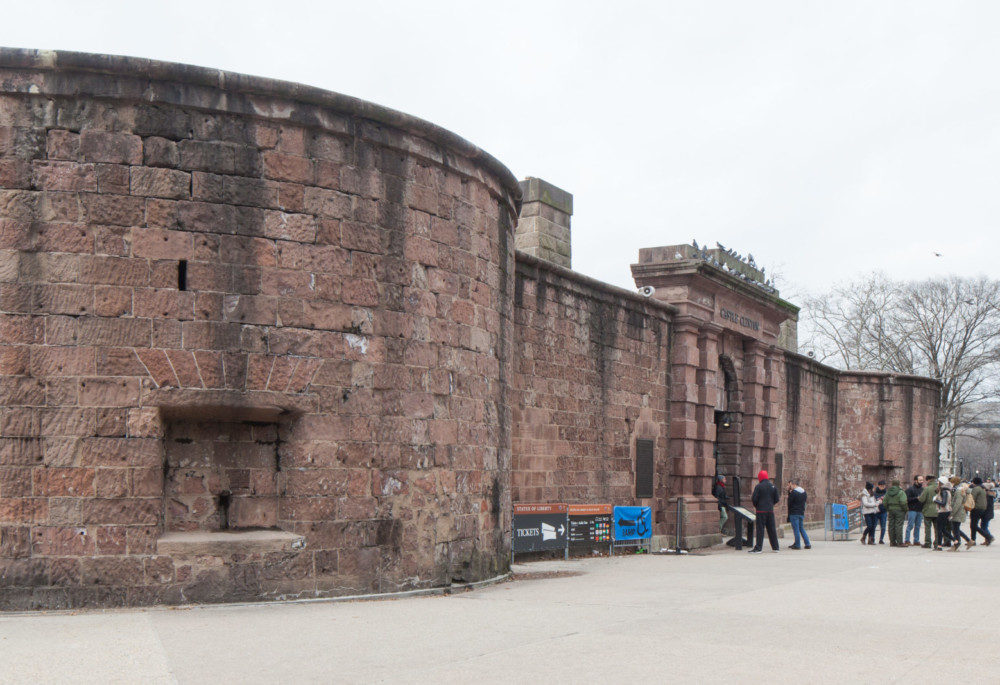THE BATTERY AND CASTLE CLINTON
Castle Clinton: 1808-11, Lt. Col. Jonathan Williams and John McComb, Jr.
Originally sited on an island some 300 feet off the Battery, Castle Clinton was built for the War of 1812 as one of a pair of fortifications, the other being the still-surviving Castle Williams on the northern shore of Governors Island. The horseshoe-shaped brownstone monument has seen many and varied incarnations during its over 200 year-history, including pleasure garden and concert hall, aquarium, ruin, and finally National Monument. It also served as an immigration station, processing nearly eight million immigrants newly arrived in America- as compared to the roughly 12 million immigrants who passed through Ellis Island, its successor.
During the 1930’s and 40’s Castle Clinton was at the center of an epic preservation battle between legendary city Parks Commissioner Robert Moses and opponents of his plan to raze the structure for a parkway and bridge connecting Manhattan’s Battery with Brooklyn. A coalition of historic, art, and landscape societies, led by the Regional Plan Association’s Robert McAneny, advocate Albert S. Bard, Manhattan Borough President Stanley Isaacs, and admiralty attorney C. C. Burlingham organized as the Central Committee of Organizations Opposing the Battery Bridge to fight Moses’ plan. Moses lost, Castle Clinton was declared a National Monument in 1946, and the Brooklyn-Battery Tunnel was built instead. Castle Clinton is a NYC Individual Landmark and listed on the State and National Register of Historic Places.

